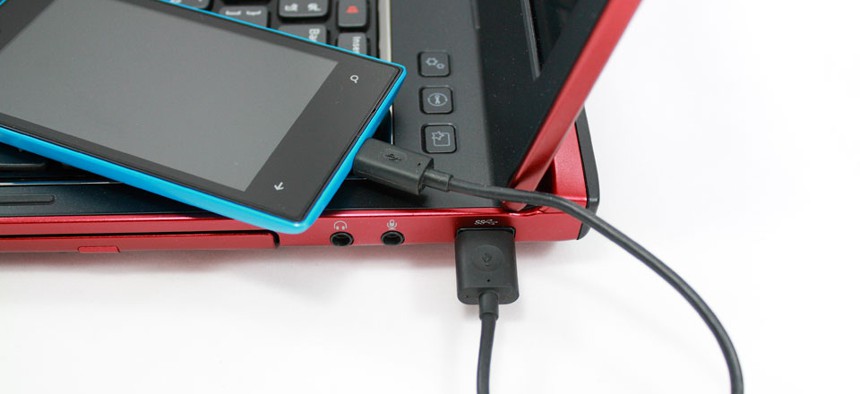Your Power Is About to Go Out—Here’s How to Make Your Cell Phone Last Until it Comes Back on

Suwan Waenlor/Shutterstock.com
A few tips to get through the storm.
Grid-killing natural disasters are attacking the US east coast often enough that, as a semi-regular reader service, we republish our tips for how our US readers can make their cell phones last until the danger has passed. The new addition this time around? Next time, buy yourself a solar charger. But since it’s probably too late for an Amazon next day delivery of one of those, here’s how to make your phone last given the equipment you already have on hand.
1. Fully charge your laptop, and save that charge for your phone.
It’s easy to forget that our phones charge when they are plugged into our laptops via the USB port. This works even when your laptop is not connected to a power outlet. To get the most out of this trick, restart your laptop to kill all running applications and processes, dim the screen to nothing, and don’t use it for any other purpose. Just plug your phone in when the phone gets low on charge and allow it to parasitically drain your laptop’s (much larger) battery.
2. When the power goes out, turn off all the radios on your phone you’re not using: WiFi, Bluetooth, etc.
Your phone’s radios are the major drain on battery life. If you want to leave the phone connected to the cell network in case of emergency text messages or incoming calls, but you don’t need to browse the internet, turning off WiFi will preserve battery life, as will turning off the Bluetooth radio that the phone uses to communicate to headsets, keyboards and other accessories.
On an iPhone, these radios can be turned off simply by swiping up from your lock screen (in iOS7). Here are instructions for an Android device.
Put the phone in “Airplane mode” or turn it off entirely if you aren’t using it and aren’t anticipating incoming calls or texts.
3. Keep your phone plugged into a charger until the power goes out.
Update: Quartz developer about town Sam Williams points out that it’s also important that your phone charger be “plugged into a good surge protector in case of weird power spikes around time of outage.”
4. Turn off all “push” notifications on your phone.
News services and various apps send you “push” notifications that require your phone to power up just a bit in order to receive data from a remote location. Here’s how to switch them off in Android and on the iPhone. Turning all of these off will minimize the use of those battery-hogging radios. On an iPhone, you can also turn off “location services” which work in a similar way.
5. Restart your phone to kill all the apps that are running now.
This will assure that no unnecessary apps are running in the background, draining power by making the phone’s microprocessor do extra work.
6. Turn down the brightness on your screen.
Displays on phones are the other major battery hog. Turn down the display to the lowest level at which you can still read it.
7. Send text messages instead of making phone calls.
Text messages are tiny amounts of data, sent quickly, and do not tax your phone’s batteries the way a phone conversation does. Plus, texts are more likely to get through when the cell network is overwhelmed.
8. Borrow a cell phone car charger.
Sure, if you have a car, you should already own one of these items, but in a pinch, maybe your neighbor has one.
9. Do not use your phone.
This may seem obvious, but it’s easy to forget, in our fiddly, always-on age that you can step away from your mobile device except for periodic updates on the progress of the storm. Remember that if repair crews are overwhelmed, power could be out for days.
Reprinted with permission from Quartz. The original story can be found here.
(Image via Suwan Waenlor/Shutterstock.com)
NEXT STORY: Cloud brokers: Stretching the benefits beyond IT


